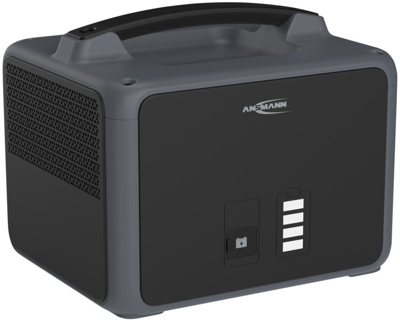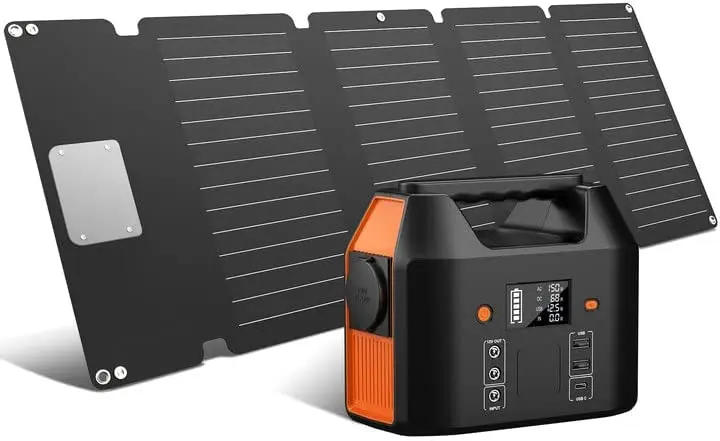In a world increasingly reliant on mobile technology, having a reliable source of power when you’re away from traditional outlets can be a game-changer. Portable power stations—often referred to as battery generators or solar generators—are compact, self-contained units that provide electric power to run or charge your devices off-grid. From campers and travelers to homeowners seeking emergency backup, a portable power station can ensure you stay connected and keep critical devices running even when the electricity is out.
But how do you choose the right model when so many options exist, each touting different battery capacities, output ports, and special features? In this in-depth article, we’ll explore the key considerations when selecting a portable power station—covering everything from battery technology and power output to recharging methods, safety features, and brand reputation. By the end, you’ll be well-prepared to pick a unit that meets your energy needs and budget while offering reliable performance wherever you roam.

1. Understanding Portable Power Stations
A portable power station is essentially a large rechargeable battery with integrated inverters and multiple output ports, all packaged in a compact, user-friendly format. Unlike gas-powered generators, these devices don’t produce noise, fumes, or require combustible fuel—they store electricity from a wall outlet, car charger, or solar panel input, then discharge it via AC outlets, USB ports, or DC outputs.
Common use cases include:
- Camping and RVing: Powering lights, small fridges, fans, and electronics in remote areas.
- Home Emergency Backup: Keeping critical devices (phones, medical equipment, Wi-Fi routers) running during power outages.
- Outdoor Events: Tailgates, backyard parties, or job sites where electricity is unavailable.
- Work-from-Anywhere: Enabling laptops, modems, or other equipment in places without reliable grid power.
Selecting the best model depends on your specific power demands, portability needs, and budget constraints. Let’s break down the primary factors to consider.
2. Battery Capacity and Rated Power
a) Battery Capacity (Watt-Hours)
The heart of a portable power station is its battery capacity, typically measured in watt-hours (Wh). This rating indicates how much energy the battery can store overall. For instance, a 500 Wh station can theoretically supply 500 watts for 1 hour, or 100 watts for 5 hours, before depleting.
- Lower Capacities (< 300 Wh): Ideal for short outings or powering small electronics (phones, tablets, LED lights) or as a backup for essential tasks like charging your phone multiple times. They’re lightweight and compact, but limited in how many devices they can power simultaneously or for extended periods.
- Mid-Range Capacities (300–700 Wh): A sweet spot for many campers and travelers, able to handle larger devices (like mini-fridges, projectors, CPAP machines) for a few hours or power smaller items over a weekend trip.
- High Capacities (700–2000+ Wh): Suited for powering more energy-hungry appliances—like power tools, portable AC units, or multiple devices at once. Great for extended off-grid living or serious emergency backup, but heavier and pricier.
Assess your typical energy usage. List the wattage of key devices you plan to run, how long you need them running, and factor in some buffer. This ensures you choose a power station that can handle your demands without frequent recharging.
b) Power Output (AC Inverter Rating)
Portable power stations include an inverter to convert the DC battery power into AC power (like standard household outlets). Each unit lists a continuous power output (in watts) and sometimes a peak/surge rating for short bursts. For example:
- 300W continuous, 600W surge: The device can reliably run appliances that draw up to 300 watts continuously, with a short surge capacity up to 600 watts—helpful for motor-driven devices that spike in power on startup.
- 1000W continuous, 2000W surge: Allows operation of higher-wattage items (like a blender or coffee maker), but only if it doesn’t exceed 1000W while running.
Ensure the continuous rating supports the total wattage of everything you’ll power simultaneously. If you plan on using multiple appliances, sum up their wattages. For instance, running a 60W laptop charger plus a 40W fan plus a 500W mini-fridge concurrently draws 600W total, so you’d need a power station rated at least 600W continuous.
3. Battery Technology: Lithium vs. Others
a) Lithium-Ion (Li-ion)
Modern portable power stations commonly use lithium-ion batteries (similar to laptop or smartphone batteries). Li-ion offers:
- High Energy Density: More capacity per pound.
- Long Cycle Life: Typically 500–1000+ charge cycles before capacity significantly degrades.
- Lightweight and Compact: Easy to carry.
The main disadvantage is cost—Li-ion is pricier than older technologies, and temperature extremes (especially very cold or hot conditions) can reduce performance.
b) LiFePO₄ (Lithium Iron Phosphate)
A subtype of lithium battery, LiFePO₄ is gaining popularity for portable stations due to:
- Longer Cycle Life: Often 2000–3000+ cycles.
- Enhanced Safety: Lower risk of thermal runaway.
- Stable Voltage Output: More consistent performance.
They may be heavier than standard lithium-ion but offer improved lifespan. If you plan on frequent, heavy usage, LiFePO₄ might be worth the premium.
c) Lead-Acid
Some older, budget-friendly portable power stations use sealed lead-acid batteries:
- Pros: Lower upfront cost, proven track record in automotive or marine contexts.
- Cons: Heavier, lower energy density, fewer usable cycles before degradation.
- Use Case: If weight isn’t a big factor or usage is occasional. However, lithium-based units typically provide a better overall experience.
Given the market shift, lithium-based units are now the dominant choice for portability and longevity.

4. Ports, Outlets, and Connectivity
a) AC Outlets
Most portable power stations provide 1–4 AC outlets, with each outlet drawing from the same total inverter capacity. Check if they are three-prong grounded outlets. If you need to plug multiple devices simultaneously, ensure enough outlets and the combined wattage remains within the device’s limits.
b) DC Outputs (Car Socket, 12V Ports)
A standard 12V “car cigarette lighter” port is common for powering automotive accessories, portable coolers, or inflators. Some units may have additional DC barrel ports for LED strips or specialized gear.
c) USB Ports
Look for multiple USB-A (5V) ports for phones, tablets, and smaller gadgets. More advanced devices might include USB-C PD (Power Delivery) ports capable of fast-charging laptops or smartphones at higher wattages (e.g., 60W, 100W). This can be a huge plus if you rely on Type-C charging.
d) Wireless Charging Pad
Some modern power stations incorporate a Qi wireless charging pad on top—handy for wirelessly charging smartphones or earbuds that support it, though this is more of a convenience feature than a necessity.
5. Recharging Methods and Speeds
a) Wall Charging (AC Adapter)
Most units come with an AC power adapter for recharging from a household outlet. Recharging times vary significantly—some can go from empty to full in 2–3 hours, others might need 6–10 hours or more. If fast recharging is important, compare charge rates (in watts).
b) Solar Charging
If you’re off-grid or want eco-friendly recharging, solar compatibility is essential. Look for:
- Max Solar Input: The device’s manual or specs list the maximum solar wattage it accepts (e.g., 100W, 200W, 600W). Higher input means faster solar charging if you have big panels.
- Built-In MPPT Controller: An MPPT (Maximum Power Point Tracking) charge controller optimizes solar energy harvest, often more efficiently than older PWM controllers. Most modern higher-end units have MPPT built in.
- Panel Compatibility: Check if you can connect third-party solar panels via MC4 or proprietary cables. Some manufacturers also sell bundled solar kits.
c) Car Charging (12V DC)
Many power stations support recharging from a vehicle’s 12V socket, letting you top up while driving. However, it’s typically slower than wall or solar. Keep track of how many amps it pulls—some vehicles might have a fuse-limited socket, so extended charging might be safer with the engine running to avoid battery drain.
6. Weight, Size, and Portability
The advantage of a portable power station is mobility. However, bigger capacity typically means heavier units—some can weigh over 50 lbs if they house large Li-ion or LiFePO₄ packs. If you’re lugging it around campsites, on boats, or job sites, consider:
- Carrying Handles: Are they comfortable? Is there a single handle or dual side handles?
- Wheels or Trolley: Some heavier models integrate wheels for easier transport.
- Dimensions: Will it fit in your car trunk or small storage nook?
Weigh how often you’ll move it versus leaving it in one spot. If rarely moved, heavier but bigger capacity might be acceptable. Frequent mobility calls for a smaller, lighter device.
7. Inverter Quality and Waveform
Quality inverters produce a pure sine wave output, matching or exceeding grid power standards. This is important for sensitive electronics, medical devices, and inductive loads (like motors). Some cheaper units might generate a modified sine wave, which can cause issues like noise, reduced efficiency, or device malfunction. Check:
- Pure Sine Wave: Generally recommended, especially if you plan to power laptops, CPAP machines, or audio equipment.
- Modified Sine Wave: Less expensive, might suffice for simple loads like resistive heaters or basic lights, but not ideal for sensitive electronics.
8. Safety Features and Protections
a) Battery Management System (BMS)
A robust BMS monitors temperature, current flow, and voltage. It prevents overcharging, over-discharging, or short circuits. Good BMS integration is crucial for longevity and user safety.
b) Surge/Overload Protection
If the load exceeds the device’s rated capacity or a short surge spikes the draw, the system should shut down or limit output to prevent damage.
c) Thermal Management
Large battery packs generate heat under heavy load or charging. Look for built-in cooling fans, heat sinks, or other ventilation. Some models have user-replaceable or easy-to-clean air filters, maintaining efficient cooling.

9. Display and Monitoring
Most modern stations include LCD or LED displays showing:
- Battery State of Charge: Some show percentage remaining, others just bars.
- Input/Output Wattage: Helpful for real-time monitoring of consumption or recharging speed.
- Runtime Estimates: Some advanced displays estimate how many hours left at current draw or how many hours to full charge at current input rate.
- Warning Indicators: Overheating, overload, or low battery.
Intuitive, detailed displays help you manage power usage effectively. Some devices also offer companion apps with Bluetooth or Wi-Fi connectivity for remote monitoring.
10. Brand Reputation and Customer Support
Quality can vary widely among portable power station brands. Recognized companies often have better warranties, more robust testing, and proven track records. Check:
- Warranty Length: Typically ranges from 1 to 2 years, with some premium models offering up to 3 or more years.
- Customer Service: If something malfunctions, you want responsive support and available spare parts.
- Online Reviews: Look at real-world user experiences. Are there frequent complaints of battery issues or software glitches?
Leading brands in this space include Jackery, Goal Zero, EcoFlow, Bluetti, Anker, among others— each with distinct specialties or design philosophies.
11. Price Range and Value
Portable power stations can cost from $100 for small 150Wh units to $2,000+ for large 2000Wh+ models. Your decision should hinge on:
- Capacity Needed: Higher Wh generally means a bigger price.
- Features: Pure sine wave, advanced display, faster charging, LiFePO₄ battery, etc., can push cost up.
- Use Frequency: If you rarely need emergency power, a budget-friendly device might suffice. For daily off-grid living or frequent usage, a premium, durable model might save money long-term by offering better cycle life and reliability.
Perform a cost-per-Wh or cost-per-lifetime cycle comparison to see which brand or model yields better long-term value.
12. Special Use Cases
a) CPAP and Medical Devices
If you rely on medical equipment like CPAP machines overnight, ensure the power station:
- Has sufficient capacity to run your device for the required hours.
- Offers pure sine wave AC output for compatibility.
- Provides enough DC or AC outlets if your device’s power supply is specialized.
b) Power Tools and Outdoor Work
Running circular saws, drills, or other tools requires an adequate watt (peak and continuous) rating. Some tools have startup surges. Also, check for enough outlets or a single high-wattage AC outlet.
c) Overlanding / Van Life
For extended off-grid living in a camper or van, look for:
- Large capacity (1000Wh+).
- Fast solar charging (e.g., multiple hundred watts input).
- Durable build with minimal standby drain.
- Possibly a 12V regulated output for powering fridges or pumps reliably.
d) Marine or Fishing Trips
Water environment demands a device with sealed ports, moisture-resistant construction, or a stable base that won’t tip easily on rocking boats. Ensure the power station can handle the humidity, and keep it sheltered from direct water contact.
13. Future-Proofing Your Purchase
- Expandability: Some systems let you attach extra battery modules for greater capacity. If you plan to scale up usage later, modular solutions might be worth considering.
- Firmware Upgrades: A few advanced brands enable over-the-air software updates, improving performance or adding features.
- Accessory Ecosystem: Are there official solar panels, carrying cases, extra battery expansions, or specialized cables that integrate well?
While you can’t predict every need, picking a brand or model with flexible recharging, multiple ports, and robust cycles can help your purchase remain relevant for years.

14. Safety Precautions and Best Practices
- Avoid Extreme Temperatures: Operating or storing the power station in very hot (over 104°F) or freezing conditions can degrade battery life and pose safety risks.
- Regular Charging: Lithium-based batteries degrade if left at zero charge for extended times. Top it off every few months if not in regular use.
- Proper Ventilation: When running high loads or recharging at high rates, ensure the device’s fan vents aren’t blocked.
- Don’t Exceed Rated Output: Overloading can cause the inverter to shut down or damage the system.
- Transport and Storage: Some airlines or shipping carriers restrict large lithium batteries—check regulations if traveling. Keep the device protected from impacts.
15. Conclusion
Investing in a portable power station can transform how you use power on the go—whether it’s for weekend camping getaways, professional job sites, or ensuring lights stay on during a grid outage. But the diversity of models, features, and battery chemistries demands a thoughtful approach:
- Capacity (Wh) and Inverter Output: Match them to your device wattage and runtime needs.
- Battery Type (Li-ion vs. LiFePO₄): Weigh weight, cycle life, and budget preferences.
- Charging Flexibility: Evaluate recharging speeds via wall, car, or solar input, ensuring you can easily replenish the station when needed.
- Ports and Features: Determine how many AC/USB/12V outputs you require, plus any advanced features like fast-charging USB-C, app connectivity, or built-in solar input.
- Brand and Reliability: Look for a proven track record, robust warranty, and a design that meets your usage frequency.
By keeping these considerations in mind, you can select a portable power station that reliably delivers electricity where and when you need it. From powering essential electronics during emergencies to enabling off-grid adventures, the right choice will make your life simpler, safer, and more connected—no matter how far off the beaten path you wander.
